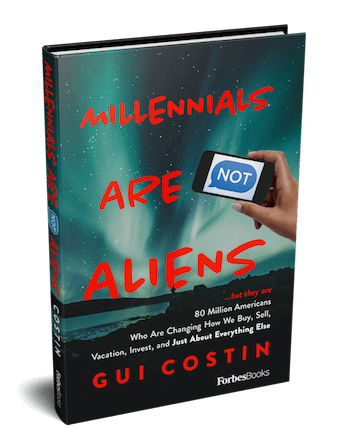Who are they?
It’s easy to believe the Millennial generation can be generalized into simple categories. You’ll always find them with mobile devices in their hands, posting to Facebook, Instagram, and Snapchat. They’re more open-minded about social issues like climate change and sexual orientation. Brands are studying Millennial spending habits and trends meticulously to learn where and how best to spend their marketing budgets.
Traditional corporate views do not mirror the millennial mindset at all. Millennials do not automatically follow societal norms and instead conduct research to develop their own opinions. The mass-market, less personalized corporate structure is just not how that generation does things.
With the prominence of social media in most companies, marketing strategies are beginning to adopt more of a personal, engaging stance. The challenge is to cut through the clutter in a non-interruptive way since there is such a wide range of options available to consumers and a strong awareness of pushy marketing tactics. Less traditional marketing efforts, like social media, are now playing an important role. Millennials don’t want to feel manipulated, so you have to find a healthy balance between brand awareness and product promotion to ensure Millennials are encouraged to take action.
Differing Opinions
There’s still some skepticism as to why marketers are focusing so heavily on this group and seemingly forgetting about the others. Although it seems like most brands have jumped on the Millennial bandwagon, some are holding out. While they are a growing demographic, neglecting the rest of the market seems unwise.
When they currently possess 80% of the developed world’s wealth, ignoring Baby Boomers can be a serious error. There’s money in their pockets right now that they are looking to spend, though they don’t have as much long-term consumer value as Millennials. Unless a brand’s products and services are only applicable to that group, brands should never focus their marketing on just one generation. Consider that tablets sell to a wide range of consumers, but selfie sticks probably won’t sell to many Boomers.
The diversity among them also makes it difficult to target the Millennial generation. Though they fall into the same generation, millennials in their 30s have differing purchasing power and interests as those who are just entering college. Some may be paying back loans and starting a family, while recent graduates could have greater disposable income because they’re entering full-time jobs for the first time in their lives.
Millennials don’t react well when they walk in the door with new ideas ready to disrupt age-old models and are told to know their place—and Baby Boomers don’t react well to a 20-something coming in and disrupting their status quo. Millennials are baffled when they’re forced to do things inefficiently, like when new hardware or software isn’t adopted in a timely manner. Then, beginning a vicious cycle, Baby Boomers get frustrated by disgruntled Millennials, dubbing them impatient. Millennials then become exasperated Baby Boomer bosses who get frustrated at them for wanting to do things differently because Baby Boomers are frequently intimidated by new technology.
Millennial Focus
Larger than any other demographic in the country, it’s estimated there are about 80 million millennials in the U.S. With an expected $1.4 trillion in disposable income by the year 2020, there are also more Millennials in the workforce than other generations.
Since the Baby Boomer generation, there hasn’t been such a fixation on marketing to a specific generation, which has resulted in confusion and a marketing void, with many consumers outside of this demographic. The focus seems to be on the long-term potential. Be aware that Millennials are not easily fooled by marketing messages because they have grown up surrounded by advertising anywhere and everywhere they go. They aren’t going to play into advertising schemes or games unless they have some real substance—they know how important their demographic is to company sales.
With student loans and starting a family, many Millennials haven’t hit their peak purchasing power, though they are certainly heading that way. Exposing Millennials to marketing tactics early is something many brands realize the importance of. But marketers should take care in making sure that they aren’t alienating other groups of consumers in the process. Perceived outsiders rethink their brand loyalty if you are solely focused on targeting younger generations and stray completely away from traditional marketing mediums.
Millennial Life Goals
A single-family home, two kids, a comfortable retirement plan, and the annual family vacation was likely what success was for older generations. This is just not so with millennials. They’re getting married and starting families later, if they have a family at all. In the workplace and in their lives millennials want freedom.
Instead of rebuking it, business owners may find greater success in accepting this employee lifestyle. Allow workers more flexible hours or remote work if you’re currently in a hiring cycle.
Companies that are giving back to the environment and/or communities reflect Millennials’ values as well as those supporting an ethical supply chain. Manufacturers that are environmentally conscious and transparent about their ingredients, process, and business practices are who millennials want to do business with. From a generation marked by skepticism and motivated by price, this how companies gain brand loyalty: by keeping in-step with millennials’ trends and mindsets.
Related Post: How Environmental Factors Influence the Traits of Each Generation
Originally posted on ForbesBooks.com

